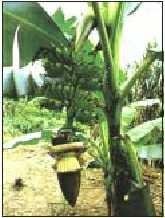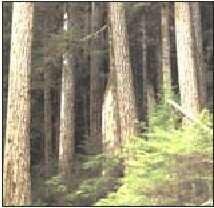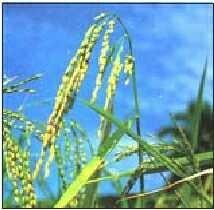Type of stem
Plants have three types of stems, namely wet stems, woody stems, and stems of grass. Each type of trunk has the following characteristics:
a. The wet stems are easy to cut, the stems are not hard and watery. Plants with wet stems are generally short, not as tall as a tree. For example: banana tree, spinach, water boyfriend, kale.

b. Woody stems, Wood stems are generally hard tree many high and large, then the wood is used to make furniture, such as cabinets, tables even for boats. Woody rods have a cambium that functions to form wood and bark. For example, teak, mango, and jambu trees.

c. Stems of grass , grass -trunked plants have segments that are real and often hollow on the trunk. Examples of rice and grasses.

In addition, plant stems can also be grouped into branching stems, straight, and hollow.
Bar function
a. Support.
The main function of the stem is to keep the plant upright and make the leaves as close as possible to the light source (especially the sun). Stems grow taller or longer. This causes the leaves that grow on the stem more easily get light. The effect of light on plants will you learn in the fifth grade.
b. Carrier.
The rod is useful as a carrier of water and minerals from root to leaf. In addition, the rod plays an important role in the process of transporting food substances from the leaves to all parts of the plant.
c. Storage.
In some plants, the stem serves as a food storage reserve. For example, stems in sago plants. Feedback here can also be tangible water, for example, in sugarcane and cactus plants. This spare food will be used when needed.
d. Breeding tools.
The stem also serves as a vegetative propagation tool. Almost all vegetative growth, both natural and artificial, uses stems.
BASED ON THE INTEREST
Based on the presence or absence of flowers, plants are classified into 2:
a. Flowering plants
Flowering plants generally have their body: roots, stems, leaves, flowers, fruits, and seeds.
Flowering plants breed with seeds or buds.
For example: orchids, mangoes, teak trees, siwalan, and others.
b. Plants do not bloom
Plants do not have flowers, fruits, and seeds.
Non-flowering plants breed with spores located behind the leaves.
For example: suplir, nail deer antlers and others.
BASED ON ITS SEEDS
Based on the seeds, the plants are classified into 2:
a. plants to pieces One (Monocotil)
Meaning: plants with seeds in one piece
For example: rice, corn, coconut, banana, onion, and others.
b. Two pieces of bamboo (Dikotil)
Meaning: plants with seeds in two pieces
For example: tomatoes, beans, oranges, and others.
BASED ROOTS
Based on its roots, plants are classified into 2:
a. plants rooted in riding
Taproot has POKO roots. Poko root branches become part of the smaller root. The roots are owned by dikotil plants
b. the plant is rooted in fibers
The fiber roots are shaped like fibers / coir. The edge and the base of roots sized almost the same. The roots of fibers are owned by monocots .